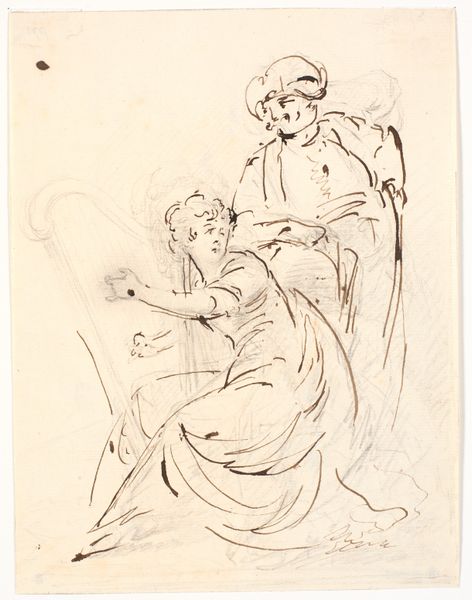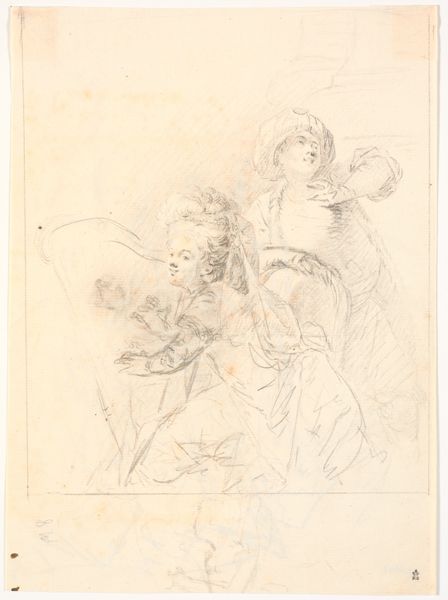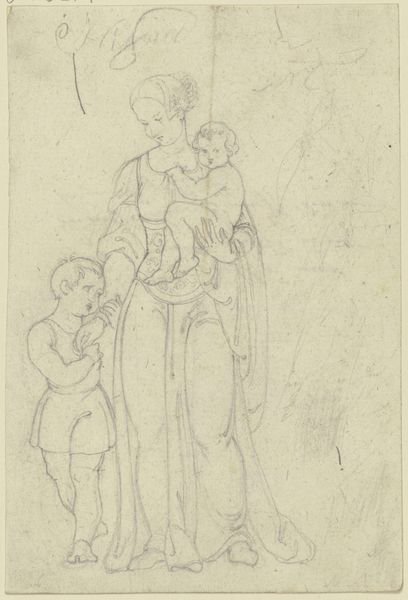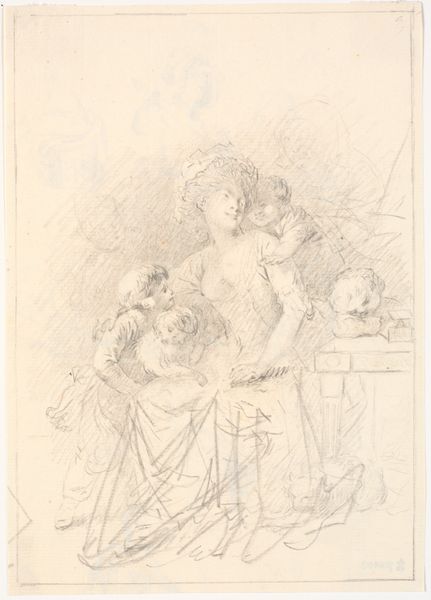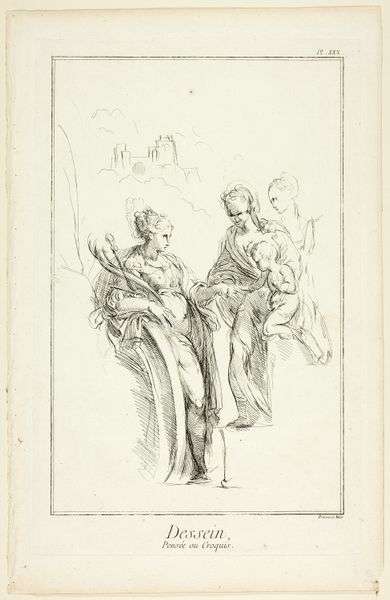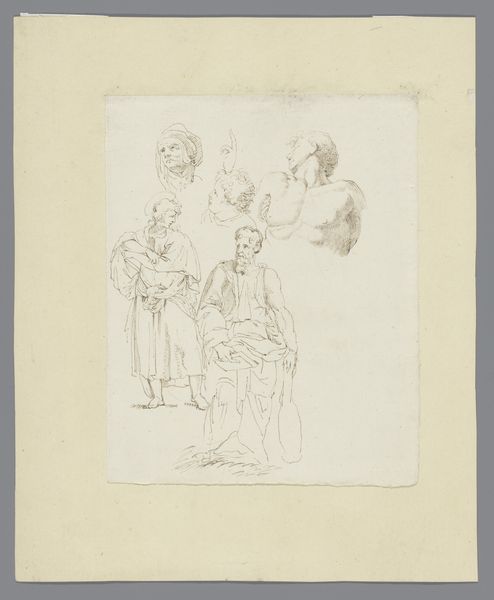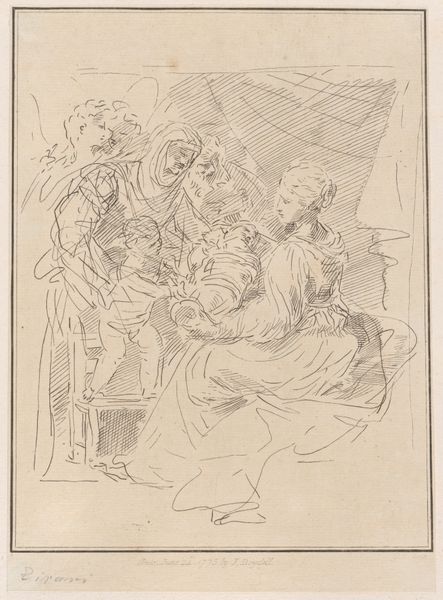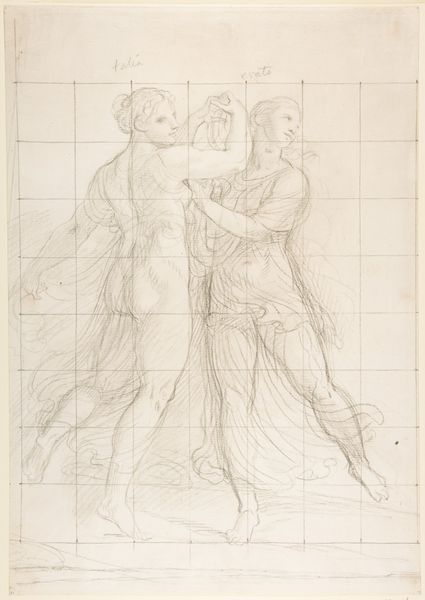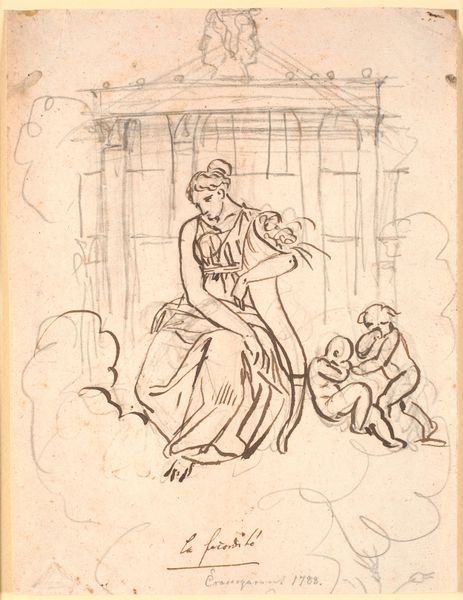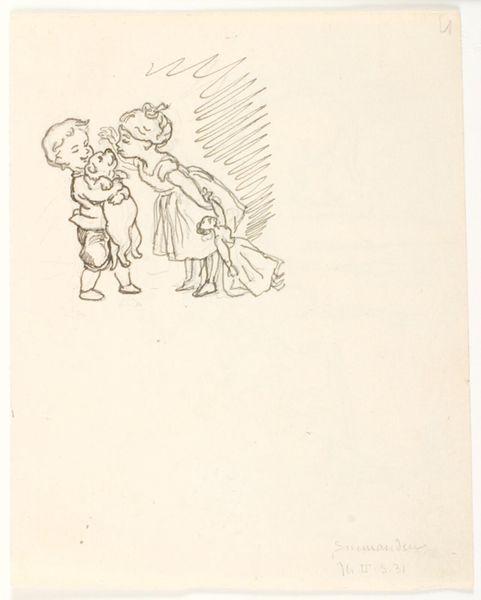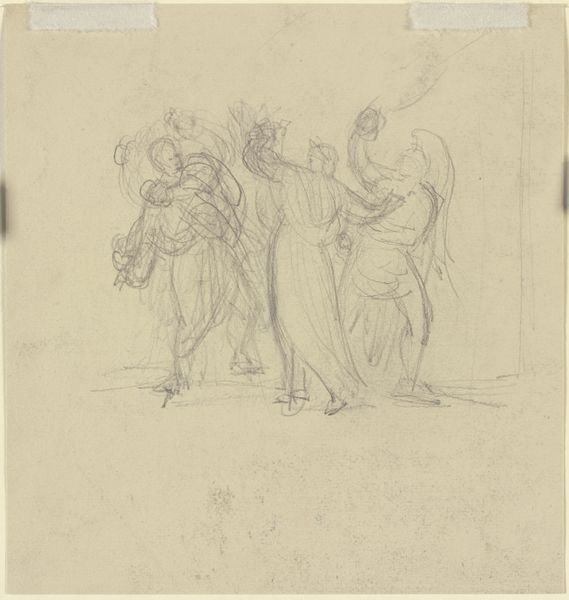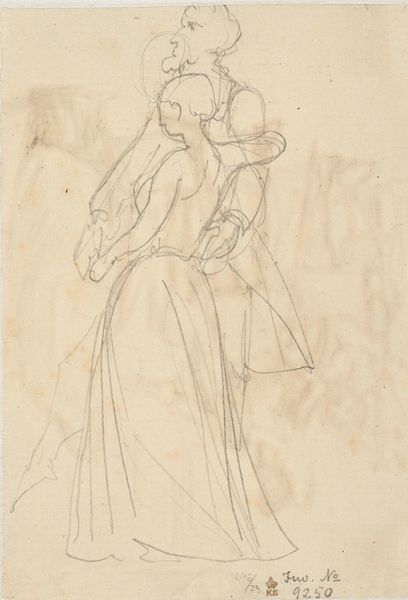
Siddende herre med en hat i venstre hånd. En stående dame læner sig til hans stol 1746 - 1828
0:00
0:00
Dimensions: 155 mm (height) x 105 mm (width) (bladmaal)
Editor: Here we have C.A. Lorentzen's pencil drawing, "Siddende herre med en hat i venstre hånd. En stående dame læner sig til hans stol," which roughly translates to "Seated gentleman with a hat in his left hand. A standing lady leans against his chair," dated somewhere between 1746 and 1828. It feels like a quick sketch, maybe a study for a larger work. What strikes you about this piece? Curator: Well, first off, the immediacy of the pencil itself. Think about the accessibility of pencil as a medium, even then. This isn't oil paint and canvas, requiring workshops and extensive training. A pencil, some paper... suddenly the means of artistic production are democratized, aren't they? It becomes about *who* has access and the *conditions* under which this work was produced. What sort of labour was deemed worthy of depiction, and what was not? Editor: So you see the *material* as directly linked to the social implications? Curator: Precisely! Look at the clothing; we can almost touch the fabric, the way the pencil captures its weight. Who had the *means* to wear these clothes? Who *made* these clothes? Consider the cost and availability of clothing dye in this era and its significance on who could afford it. Editor: I never thought about dye having that kind of implication, actually. So even the lightness of the sketch has relevance, right? The pencil, the paper… all comparatively cheap. Curator: Absolutely. And it compels us to examine the system supporting artistic creation then, who benefits, and whose stories are told? This is less about *who* they are, as people, but rather about what materials are involved in crafting and constructing an image or what cultural consumption is communicated. Editor: It changes the whole interpretation. Now, I am pondering everything they were consuming! Thanks! Curator: Indeed. Art history is also material history and cultural economics. Food for thought.
Comments
No comments
Be the first to comment and join the conversation on the ultimate creative platform.
